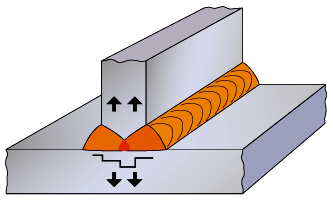In general, there are two cracking mechanisms related to underbead cracking, (1) hydrogen induced cracking and (2) lamellar tearing. Cracking associated with butt welding of components in the same orientation (such as butt welding of two plate sections or pipe welding) normally would not see the lamellar tearing phenomonem as it is normally associated with poor through thickness, material properties of steel plates.
Hydrogen induced cracking requires (1) hydrogen, (2) stress and (3) a suseptible microstructure. Without any one of the 3, HIC cannot occur. HIC is normally seen in the HAZ of high strength materials, but can also contribute to cracking in the base metal area related to lamellar tearing. Lamellar tearing is normally seen in Tee weld applications, and can result from partial pen, full pen and fillet welds. This cracking requires (1) suseptible microstructure/poor through thickness properties, (2) stress and (3) sufficient restraint. Hydrogen can also contribute to lamellar tearing. Lamellar tearing really can't happen in thin materials as distortion/yielding would happen before cracking. This is normally seen in thicker section base plates, with a fairly heavy weld connecting a perpendicular member.
The attached photo shows classic lamellar tearing and was seen in the TWI article, with the following link:
http://www.twi.co.uk/j32k/protected/band_3/jk47.htmlHope this helps.

